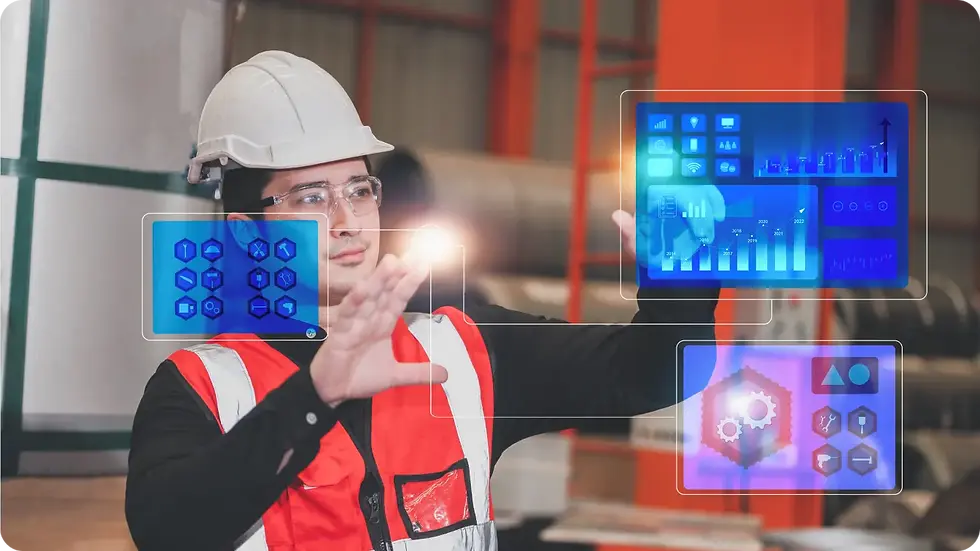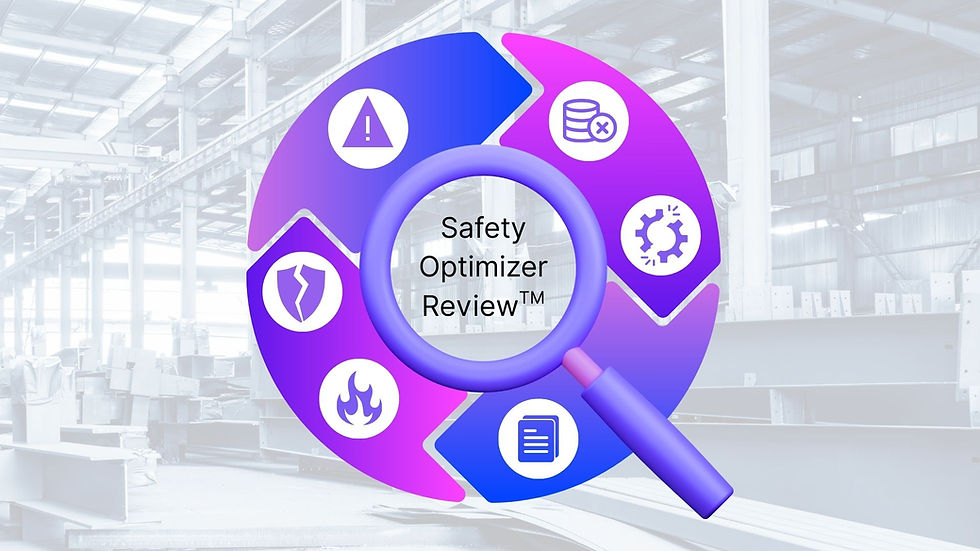The Future of Workplace Safety: How AI is Transforming Compliance
- Mar 30
- 3 min read
Workplace safety has always been a priority for businesses, but maintaining compliance with safety regulations can be challenging. With rapid technological advancements, Artificial Intelligence (AI) is playing a key role in transforming how companies ensure a safe and compliant work environment. From predictive analytics to real-time monitoring, AI is revolutionizing workplace safety by reducing risks, preventing accidents, and enhancing compliance processes.
In this blog post, we’ll explore how AI is reshaping workplace safety, the benefits it brings, and the challenges that businesses must navigate.

The Role of AI in Workplace Safety:
1. Predictive Analytics for Risk Prevention
AI-powered predictive analytics can analyze vast amounts of workplace data to identify patterns and predict potential hazards before they happen. By assessing historical incidents, equipment performance, and environmental conditions, AI helps companies take proactive measures to prevent accidents.
For example, in high-risk industries like construction and manufacturing, AI algorithms can detect patterns that indicate machinery failure, reducing the chances of accidents caused by equipment malfunctions.
2. Real-Time Hazard Detection with AI Sensors
AI-driven IoT (Internet of Things) devices and smart cameras can monitor workplace conditions in real-time. These systems can detect unsafe behaviors, such as employees not wearing protective gear, operating machinery incorrectly, or entering restricted zones.
For instance, AI-powered surveillance can immediately alert supervisors when a worker fails to wear a helmet in a construction zone, helping enforce safety protocols without manual intervention.
3. Automated Compliance Audits
Traditional compliance audits require manual inspections and documentation, which can be time-consuming and prone to human error. AI streamlines the process by automating compliance checks, ensuring that workplaces adhere to safety regulations.
AI-powered systems can:
Analyze workplace safety data and generate compliance reports.
Alert management about policy violations.
Automate documentation to ensure businesses stay aligned with legal requirements.
By leveraging AI, organizations can maintain compliance more efficiently and reduce the risks of fines or legal penalties.
The Benefits of AI in Workplace Safety & Compliance
Accident Prevention: AI enables proactive risk management, reducing workplace accidents and injuries.
Improved Efficiency: Automating safety monitoring and compliance audits saves time and resources.
Reduced Human Error: AI eliminates bias and oversight in safety assessments.
Cost Savings: Preventing workplace incidents helps businesses avoid lawsuits, medical expenses, and regulatory fines.
Enhanced Worker Safety: Employees feel more secure knowing that advanced technology is in place to protect them.
Real-World Applications of AI in Workplace Safety
Amazon’s AI-powered Warehouses: AI-driven robotics and cameras help prevent workplace injuries by monitoring movements and identifying hazardous behavior.
Construction Industry AI Solutions: Companies like Smartvid.io use AI-powered video analytics to detect safety risks in real-time.
Manufacturing Plants: AI-powered predictive maintenance detects faults in machinery before they cause accidents.
Challenges & Ethical Considerations
Despite AI’s potential to enhance workplace safety, challenges remain:
🔹 Privacy Concerns: AI-powered surveillance raises ethical questions about employee privacy.🔹 Implementation Costs: Small businesses may struggle with the initial cost of AI adoption.🔹 Workforce Adaptation: Employees and safety managers need training to integrate AI into daily operations.
Companies must balance safety improvements with ethical considerations to ensure AI is used responsibly.
Conclusion
AI is revolutionizing workplace safety by enhancing risk detection, automating compliance, and improving overall efficiency. Businesses that integrate AI-driven safety solutions will benefit from a safer work environment, reduced incidents, and cost savings.
As AI technology continues to advance, the future of workplace safety will be driven by innovation, making compliance more effective and seamless. Companies that embrace AI now will stay ahead in creating safer workplaces for their employees.
👉 Is your business ready for AI-powered workplace safety? Let’s talk about how you can implement AI solutions for a safer future.




Comments